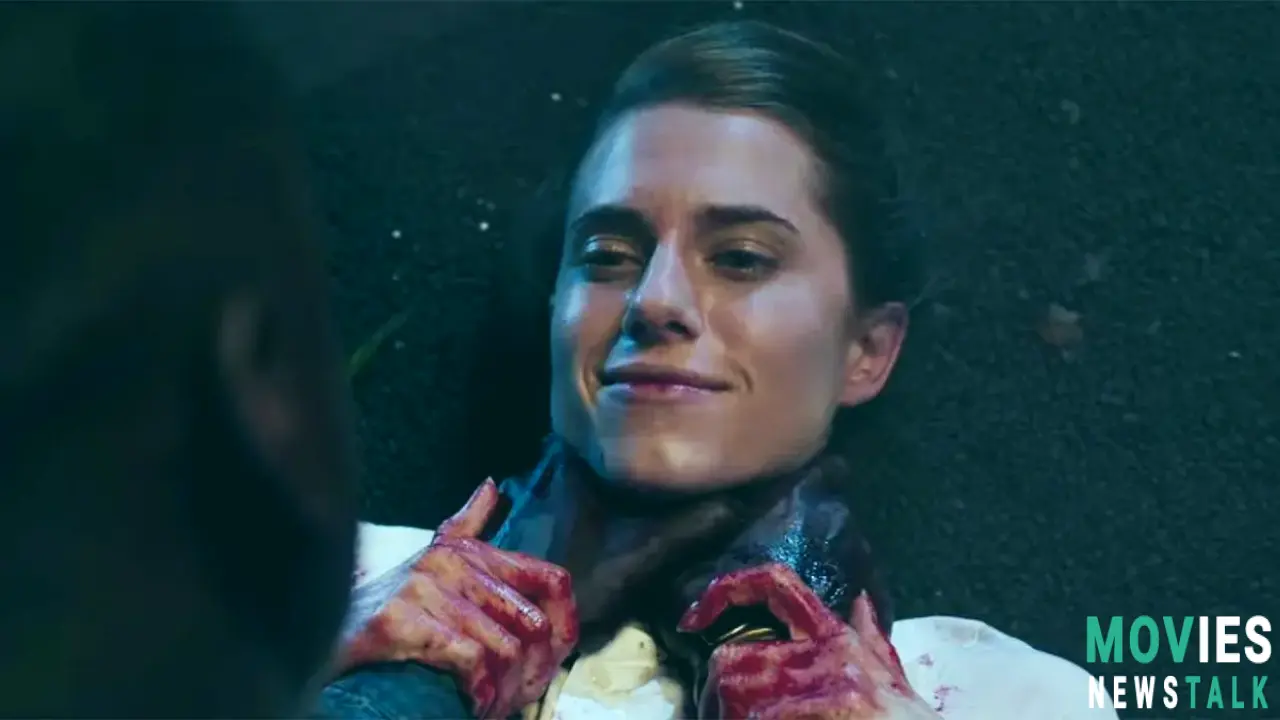Get Out : That Darker, Original Ending – A Star's Look Back!
Get Out's Alternate Ending: A Deeper Dive into What Could Have Been
Get Out (2017), directed by Jordan Peele and starring Daniel Kaluuya, is an iconic horror film, full of social commentary about the deep racism endemic in many segments of American society; cleverly concealed beneath this incredible suspense-filled thriller! This film shocked audiences! But did you know the original ending was even darker? Allison Williams (who played Rose Armitage) recently discussed that version during New York Comic Con – giving insights into its original conception and its subsequent change, along with detailing exactly how the ending ultimately helped create that iconic moment for American cinematic history.
The theatrical release ended triumphantly: Chris (Kaluuya) escapes that horrific ordeal, defeats the evil Armitage family, and gets saved by his friend Rod (Lil Rel Howery). That felt cathartic, awesome! But that was very different from the original, a much more downbeat version that concluded with Chris in prison – and this article is going to examine both.
Allison Williams Reveals the Original, Darker Ending: Why It Changed
Williams describes this initial plan, “It felt really honest, we live in America. If there’s a black man over a dying white woman’s body, and then there’s a house full of dead white people, we all kind of know how that’s going to go.” She notes that Peele aimed for truth in the original design and a very clear approach toward conveying that brutal honesty about these extremely harsh circumstances in the real world; resulting in that extremely emotional and somewhat tragic realism.
The original plot showed the bleakest reality of how these things may unfold, emphasizing the fact that American systemic racism would inevitably place blame upon Chris, the only Black character. This is what she mentions – “...we all kind of know how that’s going to go…” which emphasized exactly just how this bleak narrative possibility could’ve occurred within this very particular scene.
Yet those test audiences responded poorly. Williams details exactly how “Everyone was like, ‘I feel so darkly sad, and this is too real.’”, the emotional reactions clearly showing why these drastic changes might be necessary and beneficial toward both telling this powerful story in the most effective ways. That theatrical release delivered those specific reactions by contrast. She details how those police lights, “created this reaction in the audience of the fear for him of what the presence of the police was going to mean for his future. You got the message of the long ending,” illustrating the importance of storytelling choice.
The Theatrical Ending: Triumphant Yet Still Chillingly Relevant
Peele’s ingenious solution maintains some of this thematic importance and keeps many underlying anxieties, showing just how intense the changes to this original concept truly were; showcasing the same level of brilliant insight towards that harsh reality. He kept the ambiguous potential of those same outcomes intact. The film maintains that intense ambiguity without taking the same exact and far more potentially emotionally troubling, potentially destructive path that that initial ending offered.
That patrol car’s lights in that theatrical ending flashing across Chris? It gives a subtle yet utterly profound visual depiction of those intense, pervasive fears; the ever-present anxieties concerning that racial bias and how those very actions of heroism are frequently twisted into injustice by the system in very realistic circumstances. A great ending that both satisfied and prompted difficult conversations around systemic racism; generating meaningful changes for both society, and audiences who experienced this.
Our Thoughts on Get Out's Ending Choices: An Exploration on Artful Choices
While the darker, original ending resonates as possibly even “more realistic” – its theatrical counterpart resonated more deeply by successfully creating that sense of satisfying triumph – delivering this important counterpoint to the many brutalities existing in America’s complex relationship between society and racial groups. It provided that essential counterpoint.
And that's brilliant! Williams perfectly notes the theatrical ending’s effectiveness – “People left the theater feeling triumph and happiness, instead of feeling deeply down. I think it helped create the life that the movie had. I mean, you can’t argue that it would have had the same life with the other ending,” correctly emphasizing how powerful this final decision made upon the story itself. It successfully becomes this crucial story highlighting triumph over prejudice in American society and creates those very conversations necessary and still happening to this day. That impact cannot be understated!
Conclusion: Get Out's Power in Storytelling and Social Impact
Get Out’s success stems from its artistry. The story's effectiveness relied on multiple critical aspects; that gripping suspense and that very thoughtful, meaningful ending is paramount. Choosing that more optimistic conclusion enhances its thematic importance. That original concept might be far more realistic for many in the modern American setting but the chosen outcome remains much, much more empowering for its audience members; allowing viewers a profound moment of hope which the original ending couldn't even nearly accomplish. And its enormous, enduring success and critical impact remains largely unchanged!

